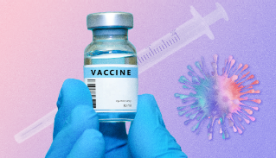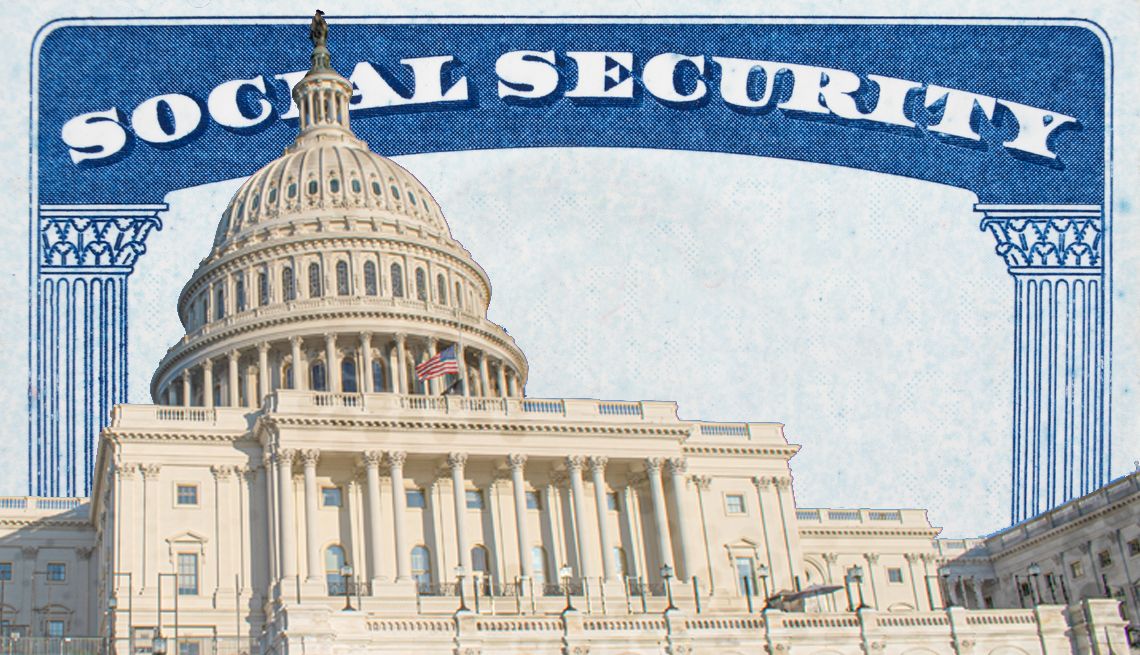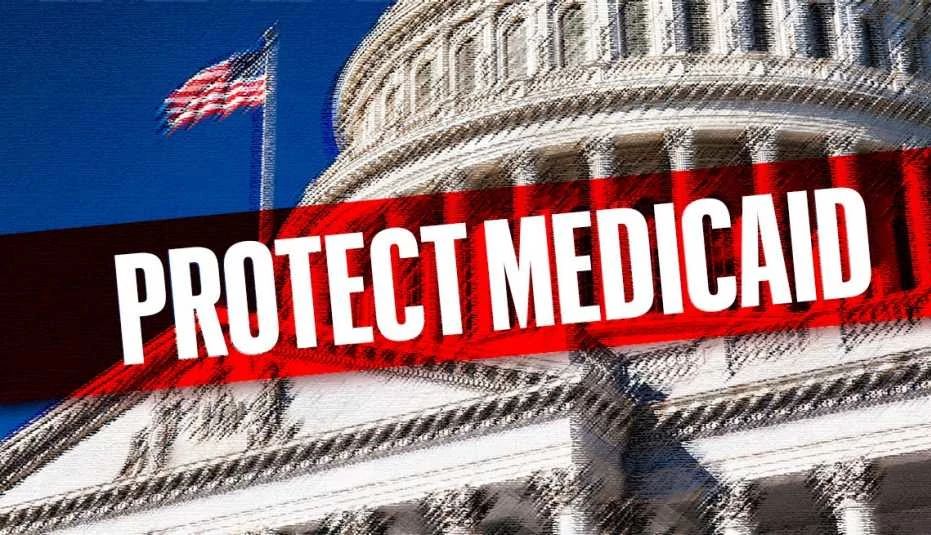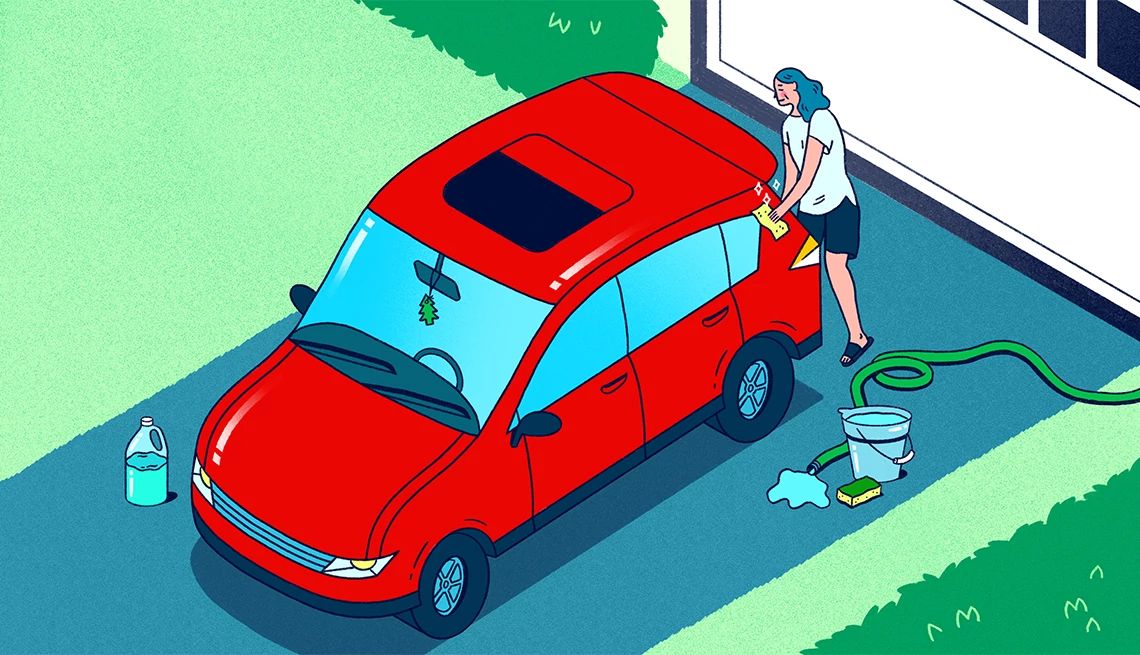AARP Hearing Center
- AARP Online Community
- Games
- Games Talk
- Games Tips
- Leave a Game Tip
- Ask for a Game Tip
- AARP Rewards
- AARP Rewards Connect
- Earn Activities
- Redemption
- AARP Rewards Tips
- Ask for a Rewards Tip
- Leave a Rewards Tip
- Help
- Membership
- Benefits & Discounts
- General Help
- Caregiving
- Caregiving
- Grief & Loss
- Caregiving Tips
- Ask for a Caregiving Tip
- Leave a Caregiving Tip
- Entertainment Forums
- Rock N' Roll
- Leisure & Lifestyle
- Health Forums
- Brain Health
- Healthy Living
- Medicare & Insurance
- Health Tips
- Ask for a Health Tip
- Leave a Health Tip
- Home & Family Forums
- Friends & Family
- Introduce Yourself
- Our Front Porch
- Money Forums
- Budget & Savings
- Scams & Fraud
- Retirement Forum
- Retirement
- Social Security
- Technology Forums
- Computer Questions & Tips
- Travel Forums
- Destinations
- Work & Jobs
- Work & Jobs
- AARP Online Community
- Health Forums
- Medicare & Insurance
- Will Medicare Pay for Shingrix?
Will Medicare Pay for Shingrix?
- Subscribe to RSS Feed
- Mark Topic as New
- Mark Topic as Read
- Float this Topic for Current User
- Bookmark
- Subscribe
- Printer Friendly Page
- Mark as New
- Bookmark
- Subscribe
- Mute
- Subscribe to RSS Feed
- Permalink
- Report
.
Medicare A or B itself doesn’t cover the shingles shot but all Medicare Part D plans and Advantage plans with built-in Part D coverage cover the shingles Vaccine. Depending on your Medicare part D drug plan you may have to first meet your deductible which can be no more than $445 in 2021.
Keep it simple
- Mark as New
- Bookmark
- Subscribe
- Mute
- Subscribe to RSS Feed
- Permalink
- Report
Today, June 17, 2021 MedPac Report to Congress - they have recommended that all recommended preventive vaccinations be covered under part B rather than Part D. WITHOUT BENEFICIARY COST SHARING.

The MedPac Report -
See Chapter 7 (Medicare vaccine coverage and payment) - begins on report page 241
http://www.medpac.gov/docs/default-source/reports/jun21_medpac_report_to_congress_sec.pdf?sfvrsn=0
From the Report:
To improve coverage and payment of preventive vaccines under Part B, the
Commission recommends that the Congress:
• cover all appropriate preventive vaccines and their administration under Part B
instead of Part D, without cost sharing; ↩️
NOTE:
without cost sharing;
So now we have a beginning - a good recommendation for a very strong and reliable sourse - MEDPAC - The Medicare Payment Advisory Commission (MedPAC) is an independent congressional agency established by the Balanced Budget Act of 1997 (P.L. 105-33) to advise the U.S. Congress on issues affecting the Medicare program.
I have seen NO advocacy from any supportive organization for this position - but I'm all ears if you can show me.
Maybe it is time for us all to start writing our CongressCritters in support of this change.
Roseanne Roseannadanna
- Mark as New
- Bookmark
- Subscribe
- Mute
- Subscribe to RSS Feed
- Permalink
- Report
But isn't this something that needs to be changed ?
I mean, afterall, the ACA mandates recommended preventive care, including immunizations at no out of pocket for the rest of the population. I also imagine that Medicaid covers them for dual eligibles and maybe Medicaid in general for those younger than Medicaid age.
Seems this should be something that we can all get behind because without these recommended vaccines there could be health consequences which in turn cost Medicare for the treatments - and sometimes long term effects.
Good Grief, there aren't that many of them for those of Medicare age - would also help out the disabled who are on Medicare too.
Seems groups that tout they represent us, could get behind NO Out of Pocket Cost for recommended immunizations for this (Medicare) age/disability group.
I think we have been shafted here - want to get this fix!
Who agrees????? AARP.org?????
Roseanne Roseannadanna
- Mark as New
- Bookmark
- Subscribe
- Mute
- Subscribe to RSS Feed
- Permalink
- Report
- Mark as New
- Bookmark
- Subscribe
- Mute
- Subscribe to RSS Feed
- Permalink
- Report
Shingrix - the newest shingles vaccination is a 2-dose series proven to be up to 90% effective at preventing shingles. The older one was a live vaccine - Zostavax - and it was not near as effective but it is still on some Part D formularies along with Shingrix in case somebody needs one over the other -
However, neither of these are currently covered under Medicare Part B. They are covered under Part D - under specific Tiers with whatever co-pay.
AARP - Does Medicare Cover the Shingles Vaccine?
from the link ~
Medicare coverage for Shingrix and Zostavax, the two commercially available shingles vaccines, is provided only if you are enrolled in a stand-alone Part D drug plan or a Medicare Advantage plan that includes Part D drug coverage.
Medicare requires Part D plans to cover the shingles vaccine, so if you’re enrolled in Part D, you shouldn’t have difficulty obtaining the shot. Most require a copayment, which can vary widely from plan to plan.
And if you haven’t yet met your plan’s deductible for the year, you’ll likely pay the full price. For Shingrix, the newer vaccine, that averages around $190, according to GoodRx, a website and app that tracks prescription prices.
I don't know what your Part D is or how your coverage is paid - maybe you have Medicare & Medicaid or some form of extra help that picks up your cost in your Part D. All I can tell you is how the program is currently set up for those who are on only Medicare with a Part D plan for this vaccine and a few others.
Medicare & You 2021 - Shots (vaccinations) 40, 45, 47, 50
Page 47 - from the link ~
Shots (or vaccines)
Part B covers:
• Yearly flu shots. See page 40.
• Hepatitis B shots. See page 40.
• Pneumococcal shots. See page 45.
Medicare drug coverage (Part D) covers all other recommended adult
immunizations (like shingles, Tetanus, diphtheria, and pertussis vaccines) to
prevent illness. Talk to your provider about which ones are right for you
These are the ONLY (3) CDC / ACIP recommended vaccinations that are covered under Part B currently. Medicare.gov - Preventive & screening services - check under the heading of "SHOTS"
Page 50
The "Welcome to Medicare" visit only includes education and counseling about preventive services, including certain screenings, shots or vaccines (like flu, pneumococcal, and other recommended shots or vaccines)
Page 51
The Yearly "Wellness" Visit only include a review of preventive
services including education and counseling on screenings and recommended shots or vaccines
We, as Medicare beneficiaries, have been shafted because the PPACA mandates that "recommended" preventive services be covered with NO out of pocket cost - but the preventive care recommended vaccines for those on Medicare are NOT covered in this manner -
The June 2021 MedPac presented to Congress last week recommends that this be changed. (see my post in this same thread of 06-17-2021 09:24 PM)
Roseanne Roseannadanna
- Mark as New
- Bookmark
- Subscribe
- Mute
- Subscribe to RSS Feed
- Permalink
- Report
I got the old one some time ago that is why my Dr. had me get the new one last year. It was free and I never paid anything period. Medicare covered all costs and I got it at Walgreens per Dr. request. I know of others in this area who have had the same thing happen to them with the shot. It looks like preventive services have been covered by Medicare per the FACT people got it free and I am one of them. Took me 3 phone calls to set up the appointment at the local W. The Manager there was the one who set it up, and when I arrived they had it ready to give me. Could be someone at the link left something out of what they posted.
- Mark as New
- Bookmark
- Subscribe
- Mute
- Subscribe to RSS Feed
- Permalink
- Report
If it was Shingrix (the new one), I hope you got your (2) doses - they are given two - six months apart.
I don't know what your Part D is or how your coverage is paid - maybe you have Medicare & Medicaid or some form of extra help that picks up your cost in your Part D. All I can tell you is how the program is currently set up for those who are on only Medicare with a Part D plan for this vaccine and a few others.
Why would Medicare, the AARP, HHS, even Walgreens, all be saying the same thing?
HHS.gov - Immunizations - How to Pay
Walgreens Vaccines for Older Adults >65
Why would MedPac include this change in their June 2021 Report to Congress?
Do you participate in the New Mexico MEDBANK Program
Roseanne Roseannadanna
- Mark as New
- Bookmark
- Subscribe
- Mute
- Subscribe to RSS Feed
- Permalink
- Report
I got what my Dr. ordered and right now I am not going to go back get check the details for this discussion. It was Shingrix and it was my Dr. who brought the subject up during a visit to him. I got my flu shot from him, and he set up the ok for the shot at Walgreens. I had the orginal shot years ago and he wanted me to get the new vac as it was much better. I got the shot and never paid anything for it as it was covered by Medicare. My Dr., and Walgreens backed that up at the time. It never was on my Part D Statement period.
Yes I have a high bread part D. I have no coverage gap., and there is a cap on what I have to pay on any drug. plus a lot of them are cost free to me. Never was involved with MEDBank Program.
As I have said many times there are a lot of things that happen in these systems which are not covered in the general rules, and as in all govt. programs there are ways around many of the rules, and regs. That is why you need to work with a good local group when dealing with problems. These type forms rarely really help with problems. I always tell people go local and call the local AARP Office for who to talk to.
- Mark as New
- Bookmark
- Subscribe
- Mute
- Subscribe to RSS Feed
- Permalink
- Report
There isn't any advice coming from me here - I am just posting with links what the government has posted on their applicable website - Medicare.gov, HHS.gov, CMS.gov, etc., plus what the June 2021 MedPac Report to Congress has recommended on this Medicare coverage of recommended preventative vaccines.
This doesn't have anything to do with local - Medicare is a national program.
The PPACA is a national program, the Public Health Services Act is a national program. So this subject of covering recommended vaccinations with no out of pocket cost needs to be the same in all programs because we need these preventative measures in all health care programs - to PREVENT related diseases that cost us health care dollars.
Maybe you didn't have to pay anything for your Shingrix doses, or the previous one - Zostavax, but most beneficiaries don't have that option under their specific Plan D. This thread alone(read thru it for comments on how much Medicare Beneficiaries pay) should tell you that some (Medicare Part D beneficiaries) have some objections to or paying for the cost of this specific recommended vaccination against shingles - Zostavax or the new and better Shingrix, which is (2) doses 2-6 months apart.
Again, I don't know what your Part D is or how your coverage is paid - maybe you have Medicare & Medicaid or some form of extra help that picks up your out of pocket cost in your Part D. All I can tell you is how the program is currently set up for those who are on only Medicare with a Part D plan for this vaccine, where these recommended vaccinations are covered under Part D with a cost assign to them, based on the drug tier, to the beneficiary.
That's why MedPac is now making this recommendation - Way Past Due IMO.
KFF August 2015 - Preventive Services Covered by Private Health Plans under the Affordable Care Act
CMS.gov - Affordable Care Act Implementation FAQs - Coverage of Preventative Services
https://www.federalregister.gov/d/2015-17076/p-9
PPACA Federal Registry 07/2015 - Public Health Services Act Section 2713
Section 2713 of the PHS Act, as added by the Affordable Care Act and incorporated into ERISA and the Code, requires that non-grandfathered group health plans and health insurance issuers offering non-grandfathered group or individual health insurance coverage provide coverage of certain specified preventive services without cost sharing. These preventive services
include:
- Immunizations for routine use in children, adolescents, and adults that have in effect a recommendation from the Advisory Committee on Immunization Practices of the Centers for Disease Control and Prevention (Advisory Committee) with respect to the individual involved. A recommendation of the Advisory Committee is considered to be “in effect” after it has been adopted by the Director of the Centers for Disease Control and Prevention (CDC). A recommendation is considered to be for “routine use” if it appears on the Immunization Schedules of the CDC.
Roseanne Roseannadanna
- Mark as New
- Bookmark
- Subscribe
- Mute
- Subscribe to RSS Feed
- Permalink
- Report
If there was no advice being put forwarded there would be a clear statement for people to contact their Dr. or local experts to find out if the regs posted apply to them, and no challenge when someone points out that is not the way things work for everyone. Most govt. rules on any program are written so they can be worked with and not iron clad since flexibility can be needed if a total program is to be useful to all.. My Dr. told me there would be no cost and their was no cost. He was sending all of his Medicare covered people for the shot as it was free. Looks like he new something no one else new.
It reminds me of when a poster was being given an article on what happens if you leave and then try to rejoin a medicare provider program between enrollment openings. The article was by someone at Kaiser. I had a friend at that time who was trying to do just that, and the article posted said he would have to pay a lot more. Well he did it and did not pay one cent more, and Kaiser did it for him.
Yes there are many types of Part D and I have one that is very different. I pay no premium to it, have total coverage. I get my statement like everyone does, but what it shows me is totally worthless as it does no apply to me. There is a one page add on that applies. My top drug cost is capped, and I get most of my drugs at no cost to me, and a good part of the cost of the other drugs is paid for me. I fit into the group that you say has only Medicare. I never signed up for Part D.
No one should be posting any article, rule etc without saying see your Dr. or local expert to see if it applies to you.
Some years ago I had to poster tell me how I could save money on my part D. If I had taken his advice it would have cost me over $1,000 per year.
- Mark as New
- Bookmark
- Subscribe
- Mute
- Subscribe to RSS Feed
- Permalink
- Report
.
@Gail a lot of things need to be changed that’s why AARP lobbies the federal and state governments on behalf of the over-50 population, retired and soon to be retired people and its 38 million members.
Check out some of their health, social and financial lobbying efforts. I’ll guarantee you they’ve advocated more than once for what you are suggesting.
I’ve made a bunch of calls and sent umpteen emails to my federal and state legislators all under the auspices of AARP. It works too I’ve seen ARRP fight for unfair electric rate increases twice in my state that if the legislation passed it would have been an unjustified burden on retired people with limited incomes.
@Gail you don’t need to start your own senior advocacy group
Here’s AARP’s latest lobbying efforts:
https://action.aarp.org/secure/protect-older-workers
sign up!
- Mark as New
- Bookmark
- Subscribe
- Mute
- Subscribe to RSS Feed
- Permalink
- Report
- Mark as New
- Bookmark
- Subscribe
- Mute
- Subscribe to RSS Feed
- Permalink
- Report
- Mark as New
- Bookmark
- Subscribe
- Mute
- Subscribe to RSS Feed
- Permalink
- Report
@parkroad22 - thanks for your agreement !!
I don't have time right now to post it but I have already done a lot of the leg work on this - I do believe we can turn the government's own rules and regulations back on them in this regards.
Inequality in healthcare - based on age/disability - maybe??!!
Now just need some support from the powers that be who tout on helping this specific group - there are many.
I would like to hear from others on this.
Roseanne Roseannadanna
- Mark as New
- Bookmark
- Subscribe
- Mute
- Subscribe to RSS Feed
- Permalink
- Report
The asnwer is NO unless you happen to enroll in a Part D plan that covers it, or if you are in an Advantage Plan that covers it. I have the AARP Medigap plan and they don't cover it.
I found one Part D plan that covered it, but the plan only provide 50% reimbrsement, and the premium for that plan is $500 higher than the others, so you end-up paying more in the end.
- Mark as New
- Bookmark
- Subscribe
- Mute
- Subscribe to RSS Feed
- Permalink
- Report
- Mark as New
- Bookmark
- Subscribe
- Mute
- Subscribe to RSS Feed
- Permalink
- Report
@paulat708458 several Medicare plans have been covering Shingrix at least since 2016.
Premiums & copay's vary by zip, county and the pharmacy used.
Lowest current premium in my area is $14 for a plan with a deductible of $445. Your cost is $299 while in the deductible phase then $120 after the deductible is satisfied.
Lowest premium for a $0 deductible is $64. The copay is $171 per dose.
In this situation you would be better off paying cash.
YMMV
Bark less. Wag more.
- Mark as New
- Bookmark
- Subscribe
- Mute
- Subscribe to RSS Feed
- Permalink
- Report
Shingrix wasn't put on any formulary until at least 2018 - FDA approval didn't come until October 2017 and then they had to wait on the lot release authorization. https://www.fda.gov/media/108274/download
Before this, since 2006, only the live vaccine (Zostavax) was available and its % of success wasn't very good.
I think you do an excellent service in your description of how Med D plans work and the choices available after one assures that their meds are covered under certain plans - I am talking mathematically - I remember running math comparison of plans for my Mom - which works best cost-wise - lower premiums/ higher deductible or higher premiums / lower deductible.
You need to invent an app 😉
I am gonna start another thread on my rant about Medicare's coverage of immunizations.
During that 1st year of availability, the Shingrix supply to demand was a problem and many seniors found themselves on a waitlist at their pharmacy.
Let's see
Roseanne Roseannadanna
- Mark as New
- Bookmark
- Subscribe
- Mute
- Subscribe to RSS Feed
- Permalink
- Report
If your drug plan provides a copay that is less than $150 per shot, go with it. Otherwise pay cash.
You don't NEED a drug plan to get the Shringrix vaccination.
Check prices in your area. Costco in Atlanta offered the drug for around $140 per shot a year or so ago.
GoodRx pricing currently has it at $151 at select pharmacy's.
GSK has a coupon that may allow you to obtain the medication at a lower copay.
https://www.gskforyou.com/vaccines-patient-assistance/
This thread is almost 2 years old with over 50 responses. Time to move on.
Bark less. Wag more.
- Mark as New
- Bookmark
- Subscribe
- Mute
- Subscribe to RSS Feed
- Permalink
- Report
- Mark as New
- Bookmark
- Subscribe
- Mute
- Subscribe to RSS Feed
- Permalink
- Report
No it was not covered. I have AARP Medicare Supplement Plan F and it does not cover vaccinations. My claim was denied. I also have a prescription Plan D and it also did not cover Shingrix. So I had to pay $300 for two shots. Just shows you that all the talk about the focus on providing preventive care is just BS.
- Mark as New
- Bookmark
- Subscribe
- Mute
- Subscribe to RSS Feed
- Permalink
- Report
I agree. I have the AARP supplemental Rx Walgreens plan & assumed that vaccinations would be covered. If you read the Shingrix propaganda, it claims that most health plans cover it pretty well…my wife & I both got a prescription for Shingrix and went to Walgreens. There, I discovered that the price WITH INSURANCE would be $160 per shot, and that we both would need two shots for a total of $600. I told them “Forget it…I’ll just take the shingles.”
- Mark as New
- Bookmark
- Subscribe
- Mute
- Subscribe to RSS Feed
- Permalink
- Report
- Mark as New
- Bookmark
- Subscribe
- Mute
- Subscribe to RSS Feed
- Permalink
- Report
- Mark as New
- Bookmark
- Subscribe
- Mute
- Subscribe to RSS Feed
- Permalink
- Report
Somarco quoted me on several points and then claimed my information to be "wrong" while proceeding to provide misinformation himself. I work in healthcare management and health insurance administration, for about 35 years now. I'm trying to be helpful to my fellow AARP members because this topic is confusing. Even the primary care physicians I manage are confused. So no wonder this is hard on our members.
I said: For one thing, $150 per shot. The manufacturer, GSK, sells the vaccine for $140 per shot. This would be tantamount to a 100% coinsurance which is non-sensical.
Somarco responded with: Maybe non-sensical but it happens. Quite often I also see generic copays that are higher than cash prices. But it happens, and quite often.
My clarification: A "copay" refers to a fixed dollar amount (such as $5, $10) that is the patient's share of cost once a deductible is met. It is possible that the deductible is satisfied and the plan applies a copay of, let's say, $10 but the actual cost of the drug to the plan is only $7.00. By rights, the member's cost share should therefore only be $7.00. But, this is a practice by Pharmacy Benefit Managers (PBMs) that is being highly criticized, as it should be, so write your congressman. But I was referring to a "coinsurance" which it a percentage of the drug cost paid by the patient (once the deductible is met). A coinsurance cannot be above 100% of the health plan's allowed cost for the drug since it is, by definition, to be multipled by the cost allowance. Is it possible that one could pay cash for a drug and pay less than the copay? Yes. But, highly unlikely with Shingrix (a vaccine, not technically a drug) because most plans use coinsurance for vaccines. As you all know there are multiple Tiers in most drug plans. For example, my husband's Humana plan has this for a 30 day supply. Notice that Tiers 1 and 2 have copays and the others are coinsurance. Shingrix falls under Tier 4.
Tier 1: Preferred Generic $0, Tier 2: Generic $1 Tier 3: Preferred Brand 25%, Tier 4: Non-Preferred Drug 34%, Tier 5: Specialty Tier 25%
Ironically, there are two vaccines for shingles. CDC says Shingrix is preferred over Zostavax, but because there are two, Humana can play the game of calling this on non-preferred (their own definition).
I said: What is more likely is that there was a deductible involved in the plan, meaning the plan pays nothing until the annual deductible is satisfied. The end result may mean your plan pays $0 for this "covered" drug
Somarco responded with: Again, wrong . . .Drugs covered still have a copay until the deductible is satisfied. With many plans the deductible does not apply to tier 1 or 2 drugs, especially if using a preferred pharmacy.
My clarification: A deductible is defined as the first dollars cost each year that is NOT covered by the plan. 25% What you pay, therefore, is just the uncovered cost. That is not a copay. Copays and coinsurance only kick in once the annual deductible is satisfied.m Is it possible that the deductible might be waived (or not apply) to certain drug "Tiers" or be waived for certain "maintainence drugs". Sure, but when a deductible does apply, a copay doesn't until the deductble is consumed.
I said: My husband's Humana Part D plan, for example as a $415 annual deductible. So they would pay nothing if he has not yet met his deductible.
Also wrong, for reasons already stated.
My clarification: Again, you are confusing the "cost to the patient" with the term "copay" or "coinsurance"
I said: the Affordable Care Act (which governs commercial plans) make preventive care services with $0 copays.
Somarco responded: Obamacare does not make preventive DRUGS free, only the professional services that meet preventive care criteria.
My clarification: Wrong! First, vaccines are not drugs even though Congress has confused the matter by covering certain vaccines for Medicare beneficiares under their Part D drug plans. Second, Obamacare does require that all recommended vaccines be covered on non-granfathered commercial medical benefit plans (not Medicare) with no share of cost. No deductible, copay or coinsurance. On commercial plans, covered vaccines are "medical" benefits; not part of the prescription drug plan. "Recommended vaccines" are found on the CDC website under the Advisory Committee on Immunization Practices (ACIP).
I said: people on Medicare should not be getting Shingrix from their doctor anyway since the Part D plan cannot reimburse physicians. Try to find a plan-contracted retail pharmacy for this.
Somarco responded: Very few pharmacy's are set up to file Part B claims.
My clarification: I said nothing about retail pharmacies giving vaccines that are covered by Medicare Part B nor by commercial medical benefits. I was only referring to Shingrix which is a Part D (not B) vaccine which is admintered by the PBMs (defined above). PBMs cannot process a medical claim for this submitted by a doctor because a) its not a drug plan benefit and b) they are not set up to handle medical claims (the claim is a CMS 1500 used by doctors to bill Medicare and insurance plans). If your doctor gives Shingrix to a Medicare beneficiary (who does not otherwise have commercial coverage as primary) your doctor cannot bill for this. You will pay your doctor's usual fee for the vaccine plus administration of the vaccine, have to get a receipt and file a claim with your Part D plan.
somarco added: Just ask insulin dependent diabetics that have a pump how hard it is to find a pharmacy that can/will fill their insulin and file under Part B . . .
My clarification: As noted above, I was talking about a Part D vaccine, not a Part B covered item. I do sympathize with your situation. Here is a link to Medicare's discussion of coverage of insulin pumps. https://www.medicare.gov/coverage/insulin. Yes, this falls under Part B, more specifically under the Durable Medical Equipment (DME) benefit. The DME benefit covers the pump plus any medication used in it. So you might ask your doctor to put you in touch with a Medicare Certified DME company that can supply both and bill Medicare for you (I'm assuming you have original Medicare and not a Medicare Advantage plan).
- Mark as New
- Bookmark
- Subscribe
- Mute
- Subscribe to RSS Feed
- Permalink
- Report
@LeslieCY I have over 45 years working in the health insurance business. I know what a copay is, and how insurance works.
You are entitled to BELIEVE your answers were correct if you want . . . but you are not entitled to change the truth about how insurance plans work.
There are quite a few insurance agents who likewise do not understand the way Part D deductibles work.
I made a video that specifically addresses that problem. It is one of my more popular ones.
Bark less. Wag more.
- Mark as New
- Bookmark
- Subscribe
- Mute
- Subscribe to RSS Feed
- Permalink
- Report
i did some more research since my first comment. The clerk at CVS said I would be covered (she tried several different options), but the co-pay was very high. I tried Good RX & the lowest price I could find was $150. Then I searched some more. I located this year's and next year's Formulary for my Part D plan. Shingrix is not in the 2018 Formulary, but is in the 2019. So since I already have the original Shingles vaccine I'll wait until 2019 to get Shingrix. Thanks for your response.
- Mark as New
- Bookmark
- Subscribe
- Mute
- Subscribe to RSS Feed
- Permalink
- Report
Saying or being told a particular medication is "covered", Shingrix in this case, is a meaningless term for almost all insured claims.
All 2019 PDP's in my state show Shingrix is "covered". The average retail is in the $150 range. Some plans show the drug as a tier 3 with a copay, others have it as tier 4 with coinsurance.
Member cost will vary by plan, pharmacy, zip, deductible, etc.
When you are told a medication, test or procedure is "covered" you should press further to determine your actual OOP cost.
Many times a prescription drug can have a lower cash price (including discounts from places like GoodRx) than your plan copay. It could be advantageous to carve out the drugs with higher retail pricing when comparing drug plans. Not only is it possible to save $$ on the copay but the resulting comparison could generate a lower premium plan as well.
It has been my experience that often the higher priced PDP's have inflated retail prices and similarly inflated copay's on some generics. By the same token a plan with a deductible will more often than not result in lower total OOP.
YMMV
Bark less. Wag more.
"I downloaded AARP Perks to assist in staying connected and never missing out on a discount!" -LeeshaD341679












































































